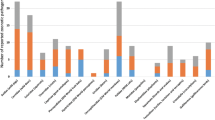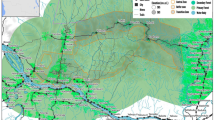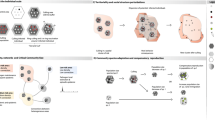
Overview
- Reviews key zoonotic bacterial, parasitic, and viral pathogens associated with wildlife hosts and transmission pathways for human infections in different parts of the world
- Describes emerging microbial food safety concerns from animal intrusions in the produce production environment
- Covers regulations and industry guidelines on best food safety practices related to wildlife and fresh produce production
- Presents One Health and co-management strategies for balancing food safety and conservation goals
Part of the book series: Food Microbiology and Food Safety (FMFS)
Part of the book sub series: Research and Development (RESDEV)
Access this book
Tax calculation will be finalised at checkout
Other ways to access
About this book
Foodborne illnesses caused by zoonotic pathogens associated with wildlife hosts are an emerging microbial food safety concern. Transmission of foodborne pathogens can occur through ingestion, or improper handling, of contaminated game meat. Wild and feral animals have also been investigated as potential sources of Campylobacter, Escherichia coli O157:H7 and other enteric pathogens following foodborne disease outbreaks linked to fresh fruits and vegetables (e.g., baby spinach in California, shelled-peas in Alaska, strawberries in Oregon). This book explores the range of bacterial, parasitic, and viral pathogens that have been described in wildlife populations in the United States, Europe and other parts of the world. It also addresses important challenges and solutions to balance agriculture, conservation, and public health goals. The book provides unique information on approaches in risk communication, co-management, and One Health in a wildlife-food safety context. The first five chapters review research on the detection, epidemiology and ecology of foodborne pathogens in wildlife populations including the influence of wildlife-livestock-human interactions. The second half of the book addresses current guidelines to mitigate microbial food safety risks from wildlife hosts and new regulations proposed by the U.S. Food and Drug Administration in the Food Safety Modernization Act Produce Safety Rule. Chapters are written by an array of internationally reco
gnized authors, and will be of interest to agriculture safety experts, ecologists, environmental health specialists, food safety professionals, microbiologists, public health practitioners, veterinarians, wildlife biologists, and others in academia, government, industry, and students in these disciplines.Similar content being viewed by others
Keywords
Table of contents (11 chapters)
-
Front Matter
-
Back Matter
Editors and Affiliations
Bibliographic Information
Book Title: Food Safety Risks from Wildlife
Book Subtitle: Challenges in Agriculture, Conservation, and Public Health
Editors: Michele Jay-Russell, Michael P. Doyle
Series Title: Food Microbiology and Food Safety
DOI: https://doi.org/10.1007/978-3-319-24442-6
Publisher: Springer Cham
eBook Packages: Biomedical and Life Sciences, Biomedical and Life Sciences (R0)
Copyright Information: Springer International Publishing Switzerland 2016
Hardcover ISBN: 978-3-319-24440-2Published: 22 December 2015
Softcover ISBN: 978-3-319-79627-7Published: 30 March 2019
eBook ISBN: 978-3-319-24442-6Published: 15 December 2015
Series ISSN: 2629-1010
Series E-ISSN: 2629-1029
Edition Number: 1
Number of Pages: XII, 254
Number of Illustrations: 21 b/w illustrations
Topics: Food Microbiology, Food Science, Environmental Health, Public Health



